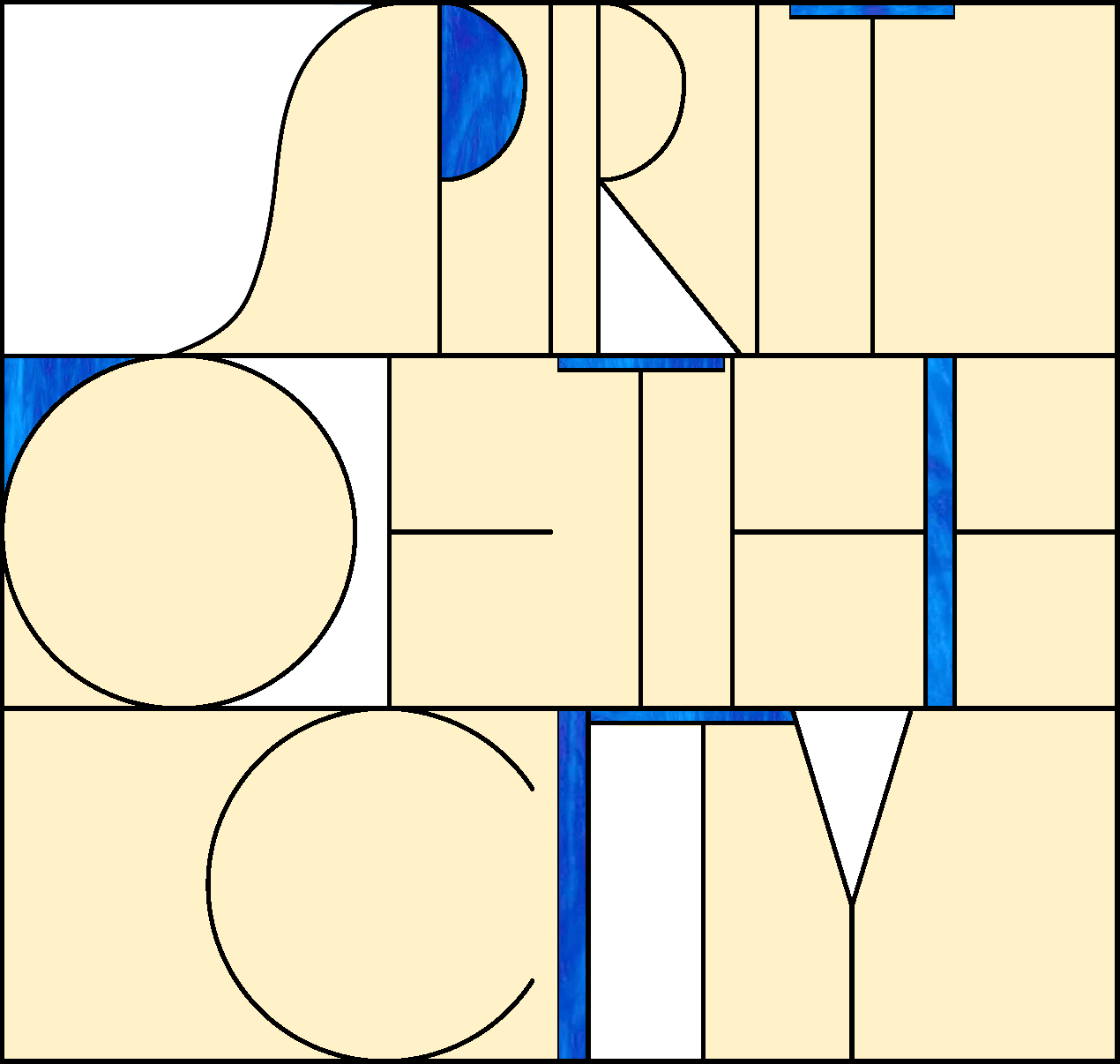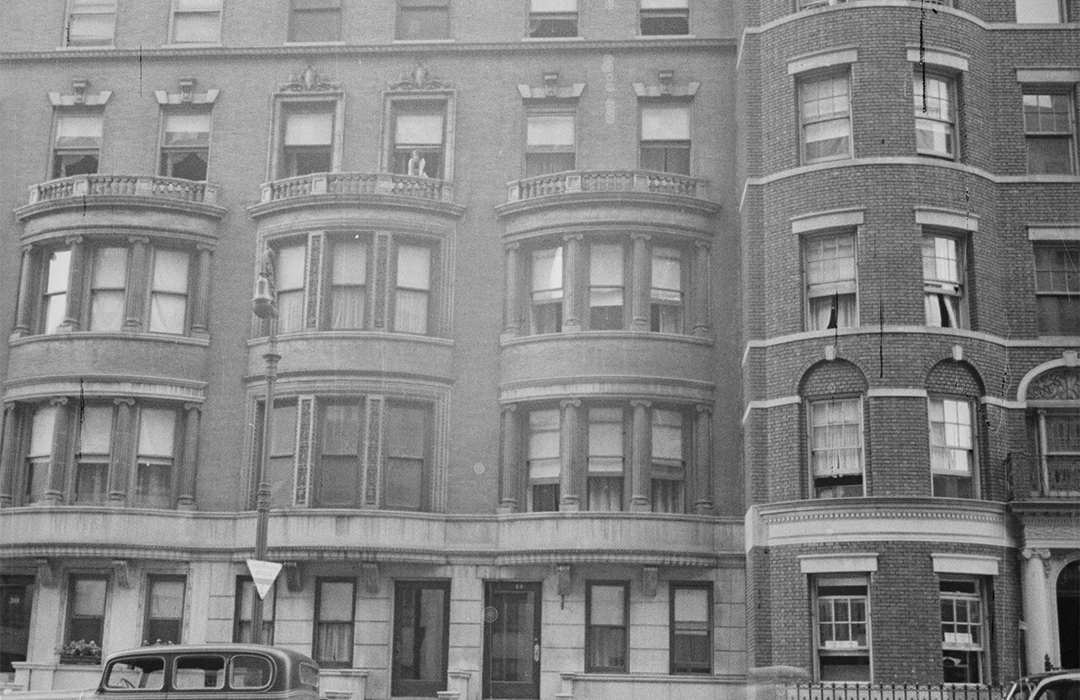
Chogyesa Temple
42 West 96th Street
by Tom Miller
In 1897, architect George F. Pelham designed a row of six upscale homes for developers Peter Wagner and Robert Wallace at 32 through 42 West 96th Street. Each of the 18-foot-wide residences was five stories tall above English basements. Their two-story bowed bays above the parlor level terminated in crown-like stone balustrades. Pelham relieved the homes’ verticality by introducing a prominent intermediate cornice above the fourth floor.
Wagner & Wallace initially rented the homes. In May of 1899, they sold 40 and 42 West 96th Street, setting off a string of game of real estate hot potato for No. 42. The house was sold again on February 27, 1903, to Abraham Quackenbush. He declared bankruptcy in 1907, and the mortgage was taken over by Franklin Burt in June. The following year, on September 24, the house was sold at auction, with the announcement describing “15 rooms, 3 tiled baths, and butler’s pantry. All latest improvements, hardwood finish, parquet floors.”
It was purchased by Max Oppenheim, a partner with Max Oppenheim in the paint manufacturing firm of Oppenheim & Co. The wealthy Oppenheims’ residency would be short-lived. On August 28, 1913, The Sun reported that Dr. Myron Scudder and Abner B. North, “of the Scudder Collegiate School, located on the same block,” had leased the residence “for a term of years.”
Courses in “Stenotypy, Library Methods, and Languages” were offered.
No. 42 West 96th Street would become an annex to The Scudder School at 59 West 96th Street. A business school, a month after moving in advertised, “Be a Private Secretary and get your training at The Scudder School.” Day classes were for “ladies only,” while evening classes were open to “both sexes.” Courses in “Stenotypy, Library Methods, and Languages” were offered. (“Stenotypy was an early form of shorthand or speed writing.)
Rooms on the upper floors of 59 West 96th Street were used for boarding students, while at 42 West 96th Street suites were leased to well-heeled tenants. On October 5, 1913, the New York Herald reported, “Mrs. Hallie Milburn Dunklin, founder and honorary president of the Dixie Club of New York, has given up her apartment in the Algonquin and is at No. 42 West Ninety-sixth street for the winter.” (In fact, Hallie Dunklin would remain here for several years.) A native of Texas, her club was for Southerners who had moved to Manhattan. She regularly entertained in her rooms here. On November 16, 1913, for instance, the New York Herald reported that she “entertained the Red Cross Auxiliary No. at her home No. 42 West Ninety-sixty street,” and on May 9, 1915, the newspaper announced, “Mrs. Hallie M. Dunklin gave a reception and tea last Monday for the members of the Colonial Descendants of America and also the Phalo Club, the latter being the second oldest woman’s club in this city.”
Another suite was home to Richard Thomas Wyche that year. He was contributing editor of The Storytellers’ Magazine.
In the meantime, The Scudder School continued to educate young women. An advertisement in the Philadelphia Inquirer on August 7, 1915—one that would be seen as highly sexist today–read:
The end of education for Girls is The Beautiful Woman in the Beautiful Home.” This end cannot be realized in the traditional school. The broader curriculum is needed, such as the Scudder School offers, giving a Liberty Education with Emphasis on the Practical Arts.
The school left 42 West 96th Street in 1916 and Emil W. Oppenheim briefly leased it to Alice Crawford. Then, on February 7, 1918, the New York Herald reported, “The former residence of Emil W. Oppenheim, a five story dwelling at 42 West Ninety-sixth street, is to be altered by the new owner, the Grassi Realty Company, into small apartments at an estimated cost of $10,000.”
The firm hired architect Frank Lages to alter the mansion “into studio apartments,” according to his plans filed a day after the New York Herald article. When renovations were completed in February 1919, Grassi Realty Company sold the house to Arart Realty Corporation.
The firm hired architect Frank Lages to alter the mansion “into studio apartments”
The studio apartments attracted several tenants who worked in the arts. One, named Armour, was a fashion designer and dressmaker and lived here in 1920. An advertisement called her fashions (including evening and street gowns) “high class.” Contralto Rosa Linde lived here in 1921, teaching students from her apartment. And actress Leona Hogarth resided here in 1925. She described herself as an “ingenue” type. Leona would leave her West 96th Street apartment in 1929 for an exciting role. On July 2, The Sun News-Pictorial of Melbourne, Australia reported,
An interesting theatrical event will be the first appearance in Australia of Leona Hogarth, a young American actress who will appear in an amusing comedy New Brooms. She is well known in New York, where she has played the lead in several modern comedies and dramas.
Not all tenants were musicians and actors, of course. Robert J. Walsh, who lived here in 1925, was a salesman. And Ernest Schulman, who lived here two years later, was a partner in the women’s apparel firm Schulman Waist Co., Inc.
Tenants of the studio apartments came and went for eight decades. Then the former mansion was purchased in 2003 by Chogyesa, a Korean Zen temple founded in the 1970s in Queens by Zen Master Seung Sahn. Alterations completed in 2013 resulted in the “Jijang-Bosal room” in the basement, “named for the boddhisava of compassion,” according to the temple’s website; a meditation room, garden and gift shop on the parlor level; and a library “for quiet study,” upstairs. (The Department of Buildings documents that there are to be “no dwelling units” on the upper floors.)
The website notes, “The temple also boasts a beautiful garden. The monks are led by Abbot Do Am, who practiced Zen in the mountains of Korea for twenty-five years.” Chogyesa Temple is visited by people from around the globe, who “come to the Buddhist Sanctuary to meditate, chant, and ‘practice together as one people.’”
Tom Miller is a social historian and blogger at daytoninmanhattan.blogspot.com
Building Database
Be a part of history!
Stay local to support the nonprofit currently at 42 West 96th Street:


